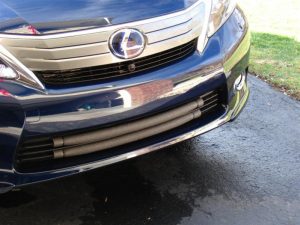In an automotive cooling system, a radiator is often thought of as just a block of tubes and fins through which coolant flows and heat is dissipated. But equally critical is how air moves through and around that radiator. The dynamics of airflow — driven by vehicle motion, fan systems, grille design, aerodynamics, and ducting — play a major role in how efficiently a radiator can shed heat. Poor airflow can cause a “bottleneck” that limits cooling regardless of how well the radiator core is designed.
In this article, we’ll explore how fans, grilles, ducts, and aerodynamics (body shape, underbody, sealing) influence radiator performance. We’ll also look at design tradeoffs and practical tips for improving airflow cooling.

Basic Principles: Why Airflow Matters
A radiator’s thermal effectiveness depends not just on how well it transfers heat from coolant to its tubes and fins (conduction and internal convection), but on how well that heat is then transferred from the fins to the passing air (external convection). The more air mass flow through the radiator fins, the more cooling potential — up to a point.
The convective heat transfer on the air side is governed by:
q=hair⋅Afin⋅(Tfin−Tair)
where depends heavily on air velocity, turbulence, and flow uniformity across the core.
If airflow is restricted or uneven, you reduce or starve portions of the core, which degrades performance even if the radiator core is excellent.
According to studies, cooling drag from the radiator and associated ducts can cause 6–10% of total vehicle drag, so balancing performance with airflow resistance is important.
Components & Factors That Shape Airflow
Airflow through the radiator is not just “air in front, air out back.” Many components and factors influence the pattern, pressure, and velocity of that airflow:
-
Grille / front intake design — the opening through which ram air enters
-
Ducting and shrouds — to guide air specifically through the radiator core
-
Fans (mechanical or electric) — assist airflow especially at low speed or idle
-
Underbody panels / sealing — to prevent air from bypassing the radiator
-
Aerodynamic body shape / pressure zones — which affect how air is pushed into or drawn through the radiator
Each of these interacts. A beautifully shaped aerodynamic car with tiny grille openings may struggle to get airflow through the radiator at low speed, unless fans or shutters compensate.
Fans: Mechanical vs Electric & Their Effects
When the vehicle is stationary or moving slowly, natural ram air is insufficient. Enter the fans.
| Fan Type | Operation Mode | Pros | Cons / Limitations |
|---|---|---|---|
| Mechanical / Belt-driven | Spins as engine RPM rises, often with clutch | Always active when engine is hot | Constant drag and parasitic load |
| Viscous Clutch Fan | Uses a temperature sensitive clutch | Reduces drag when cooling not needed | Slower response vs electric |
| Electric Fan(s) | Controlled by ECU or thermostat | More precise, can shut off when not needed | Requires electrical load, space constraints |
In modern cars, electric fans usually turn on when coolant temperature or A/C load demand it. They ensure airflow at low speeds when ram air is minimal.
Even with fans, how the air is channeled before and after the radiator matters — fans only help if there’s a pressure differential and an effective path for air flow.
Grille Design, Blockage & Shutters
The vehicle’s front grille is the first line of airflow control. A wide, open grille lets more air in, but also increases drag. Closing or partially blocking the grille can reduce drag, but risks starving the radiator of air.
One useful experiment measured how blocking portions of the grille dramatically reduced radiator airflow — even blocking only side sections reduced overall radiator flow by 35–60%.
Modern vehicles often use active shutters or variable louvers that open when cooling is needed and close when it is not, balancing aerodynamic efficiency and cooling demands.
Sealing gaps around the radiator and grille frame ensures that air preferentially passes through the radiator, not around it via bypass paths (e.g., around the edges or under the car). Many performance builds use thin rubber or foam seals to force the airflow through the core rather than around it.
Aerodynamics & Body Influence
Even if your grille and ducting are ideal, the shape of the vehicle and airflow patterns around the car influence how much air is available to enter the radiator.
-
Front bumper shape and splitter: can help direct and force air into the grille
-
Underbody panels and smooth floors: reduce turbulence under the car and increase pressure differential across radiator cores
-
Ram air / scoop inlets: on performance or classic cars, a scoop may force high-pressure air into the radiator inlet
-
Ducting exit paths: where the heated air exits (hood vents, side vents, grille back side) must avoid recirculation and interference
In high-speed conditions, some designs even exploit the Meredith effect: when air is heated through a duct, then accelerated through a converging exhaust duct, it can create some forward thrust, partially offsetting drag.
Aerodynamic simulation (CFD) studies show that radiator flow intimately interacts with front-end and body shape, and optimizing radiator intake shape can reduce drag while maintaining cooling.
Practical Table: Airflow Constraints & Effects
| Constraint / Issue | Effect on Radiator Efficiency | Mitigation Strategies |
|---|---|---|
| Grill blockage or small opening | Low air volume → reduced cooling | Use active shutters or open grille size |
| Poor sealing around core | Air bypasses radiator | Add baffles, foam seals, ducting |
| Suboptimal fan / underpowered fan | Insufficient airflow at low speed | Use higher-capacity electric fans |
| Turbulent or chaotic airflow (no ducting) | Uneven core loading | Add shrouds, guide vanes |
| High drag for cooling (excessive grille area) | More aerodynamic drag | Use active louvres, shape grille smartly |
| Reverse or recirculation airflow | Heat-laden air reenters core | Proper exit ducts, venting |
Design & Tuning Tips for Maximum Cooling Efficiency
To maximize radiator performance considering airflow dynamics, follow these guidelines:
-
Size the grill opening intelligently
Large openings help airflow but cost in drag. Use active shutter systems where possible. -
Seal and duct effectively
Block gaps around the radiator and use side baffles to direct airflow. -
Optimize fan selection & control
Ensure fans have sufficient flow and pressure rise, controlled to minimize unnecessary running. -
Use smooth underbody and airflow paths
A clean underside allows pressure differential to draw air through radiator path rather than leak paths. -
Add hood or cowl vents
Allow heated air to escape without recirculating back into intake. -
Test with pressure differentials
Measure the difference between front and back of radiator to evaluate airflow. Blocking grills can quantify sensitivity. -
Balance airflow resistance vs pressure drop
Too many ducts, bends, or tight fins add resistance. The entire path must maintain a workable pressure differential.
Case Example: Grill Blocking and Cooling Loss

A real test experiment blocked sections of a car’s grille and measured the pressure differential across the radiator. The results:
-
Partial blocking reduced radiator airflow by ~35–60%.
-
Even though drag was reduced, the cooling penalty was too severe for sustained use.
This illustrates how sensitive cooling performance is to airflow path restrictions.
Summary & Key Takeaways
-
Radiator efficiency is strongly governed by airflow dynamics, not just core thermal design.
-
Fans, grille size, ducting, sealing, and vehicle aerodynamics all play a part.
-
Poor airflow — whether from bypass paths, blockage, recirculation, or inadequate pressure differential — can cripple a high-quality radiator core.
-
Smart designs use active shutters, tight sealing, optimal duct geometry, and balanced fan systems to get the best performance with minimal drag.
-
For performance builds or replacements, consider high-flow components and good matching with aerodynamic design.
When you’re ready to upgrade or choose parts that support optimal airflow integration, you can Buy Radiator & Components online to find compatible and high-performance options.
By understanding how airflow dynamics influence radiator efficiency, you can design or select cooling systems that maintain engine temperature under demanding conditions while minimizing drag and inefficiencies.